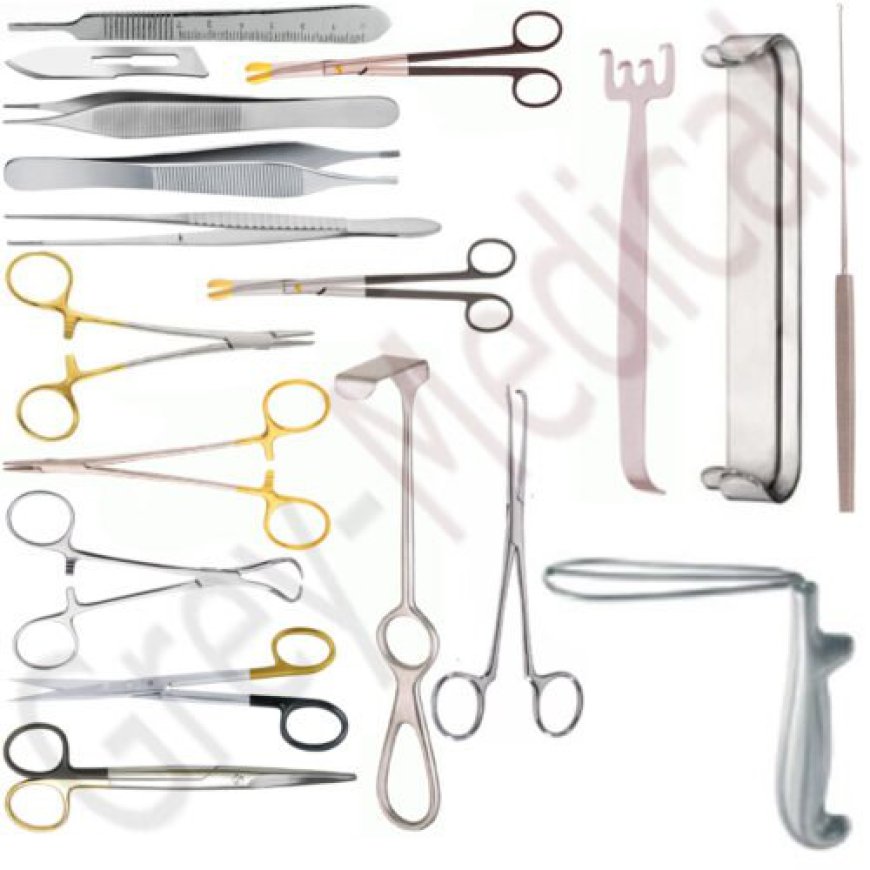Facelift Surgery Set
In today’s cosmetic surgery arena, the Facelift (Rhytidectomy) Surgery undoubtedly holds a prestigious position. Recognizing this prominence, and understanding the meticulousness required, Grey Medical is proudly introducing its dedicated category for the Facelift (Rhytidectomy) Surgery Set.
Facelift surgery is one of the most transformative cosmetic procedures available, offering patients the opportunity to turn back the clock and achieve a rejuvenated appearance. But behind every successful facelift is a set of highly specialized instruments. In this blog, we’ll explore the various components of a facelift surgery set, highlighting the role each instrument plays in achieving precise and effective results.
The Basics of Facelift Surgery
A facelift is designed to address sagging skin, deep wrinkles, and loss of facial volume. During the procedure, the surgeon makes incisions around the hairline and ears, lifts the skin, and tightens the underlying tissues. The success of the surgery depends not only on the surgeon’s skill but also on the instruments used throughout the process.
What is Included in a Facelift Surgery Set?
Here is an overview of the primary instruments used during a facelift surgery:
1. Scalpels and Blades
The scalpel is the surgeon’s main tool for making incisions. In facelift procedures, the #15 blade is typically used due to its small size and ability to create precise cuts in delicate areas like the face and neck.
2. Dissecting Scissors
These scissors, such as Metzenbaum or iris scissors, are used to carefully separate the skin from the underlying tissue layers. They allow the surgeon to work meticulously, reducing the risk of unnecessary trauma to surrounding structures.
3. Tissue Forceps
Tissue forceps, like Adson or Brown forceps, are essential for grasping and manipulating the skin and tissues during surgery. The fine tips of these forceps allow for delicate handling of the tissues, which is crucial in achieving a natural result.
4. Retractors
Retractors such as Langenbeck and Senn retractors hold the skin back, giving the surgeon full visibility of the area being operated on. Without retractors, it would be difficult to access the deeper layers of tissue necessary for tightening and lifting the face.
5. Hemostats
Hemostatic forceps, such as Kelly or Crile clamps, control bleeding during the surgery. This helps the surgeon maintain a clean surgical field and reduces the risk of post-operative complications.
6. Needle Holders
Needle holders, such as Mayo-Hegar or Olsen-Hegar, are used to place sutures. These instruments are specifically designed to securely hold the needle, allowing the surgeon to place stitches with precision and accuracy.
7. Suction Devices
Throughout the surgery, the surgeon uses suction devices to remove excess blood and fluids from the area being worked on. This ensures the surgical site remains clear, allowing the surgeon to see and work more efficiently.
8. Electrosurgical Tools
Electrosurgical devices are used to coagulate blood vessels, reducing bleeding during the procedure. This not only improves visibility for the surgeon but also helps reduce overall recovery time for the patient.
How the Instruments Work Together
During a facelift surgery, the surgeon must follow a precise sequence of steps, each requiring the use of different instruments from the facelift surgery set. From making incisions to tightening the underlying tissues and closing the wounds, every tool serves a specific purpose. By using high-quality instruments, surgeons can ensure that each step of the procedure is performed with accuracy and control.
The Importance of Precision in Facelift Surgery
Facelift surgery is a highly delicate procedure, and even the smallest mistake can affect the final result. That’s why surgeons rely on well-designed, high-quality instruments that allow them to perform the surgery with the utmost precision. Each instrument in the facelift surgery set is carefully crafted to enhance the surgeon’s ability to achieve natural-looking results with minimal scarring.
Conclusion
Facelift surgery requires a combination of surgical expertise and high-quality instruments. By using a complete facelift surgery set, surgeons can ensure they have the tools necessary to perform the procedure with precision and care. Patients undergoing facelift surgery can feel confident knowing that their surgeon has the right instruments to deliver excellent results.

 Greymedical
Greymedical 